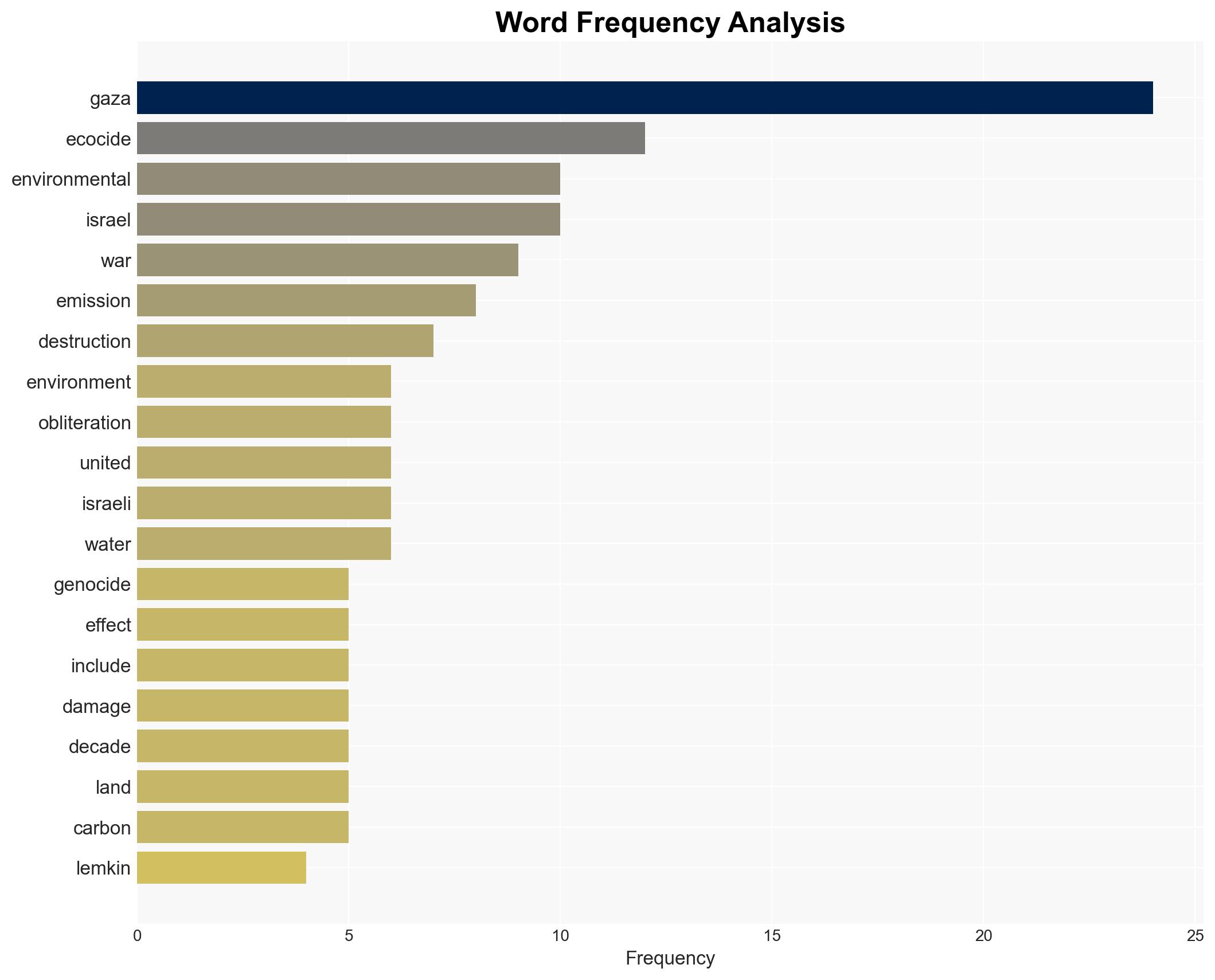Environmental Devastation in Gaza: A Case for Ecocide Recognition
Published on: 2025-11-25
AI-powered OSINT brief from verified open sources. Automated NLP signal extraction with human verification. See our Methodology and Why WorldWideWatchers.
Intelligence Report: The Ecocide of Gaza
1. BLUF (Bottom Line Up Front)
With a moderate confidence level, the most supported hypothesis is that the environmental degradation in Gaza is a result of deliberate military strategy by Israel, aimed at undermining the socio-economic stability of the region. Recommended action includes diplomatic engagement to address environmental concerns and promote sustainable development initiatives in Gaza.
2. Competing Hypotheses
Hypothesis 1: The environmental degradation in Gaza is a deliberate strategy by Israel to weaken the socio-economic fabric of the region, constituting a form of ecocide.
Hypothesis 2: The environmental damage in Gaza is primarily a consequence of prolonged conflict and lack of governance, rather than a deliberate strategy.
Hypothesis 1 is more likely due to historical patterns of military actions and documented instances of environmental manipulation, such as the use of herbicides and destruction of agricultural land. Hypothesis 2 is less supported as it underestimates the strategic use of environmental degradation as a tool of warfare.
3. Key Assumptions and Red Flags
Assumptions: It is assumed that the environmental actions taken by Israel are strategically motivated rather than incidental. The analysis assumes access to unbiased and comprehensive data, which may not be the case due to restricted access to the region.
Red Flags: Potential bias in sources advocating for either side of the conflict. The possibility of misinformation or propaganda influencing public perception and analysis.
4. Implications and Strategic Risks
The continuation of environmental degradation in Gaza poses significant risks, including exacerbating humanitarian crises, increasing regional instability, and potentially sparking broader international condemnation and intervention. The situation could escalate into further political and economic isolation for Israel, and increased support for Palestinian claims in international forums.
5. Recommendations and Outlook
- Engage in diplomatic efforts to facilitate environmental assessments and restoration projects in Gaza.
- Encourage international organizations to monitor and report on environmental conditions in conflict zones.
- Best-case scenario: Successful diplomatic interventions lead to improved environmental conditions and reduced tensions.
- Worst-case scenario: Escalation of conflict and further environmental degradation leading to a humanitarian disaster.
- Most-likely scenario: Continued environmental challenges with intermittent international attention and limited resolution.
6. Key Individuals and Entities
Raphael Lemkin (historical reference), Olof Palme (historical reference), World Bank analysts (current reference).
7. Thematic Tags
National Security Threats, Environmental Warfare, Middle East Conflict, Humanitarian Crisis
Structured Analytic Techniques Applied
- Cognitive Bias Stress Test: Expose and correct potential biases in assessments through red-teaming and structured challenge.
- Bayesian Scenario Modeling: Use probabilistic forecasting for conflict trajectories or escalation likelihood.
- Network Influence Mapping: Map influence relationships to assess actor impact.
Explore more:
National Security Threats Briefs ·
Daily Summary ·
Support us





